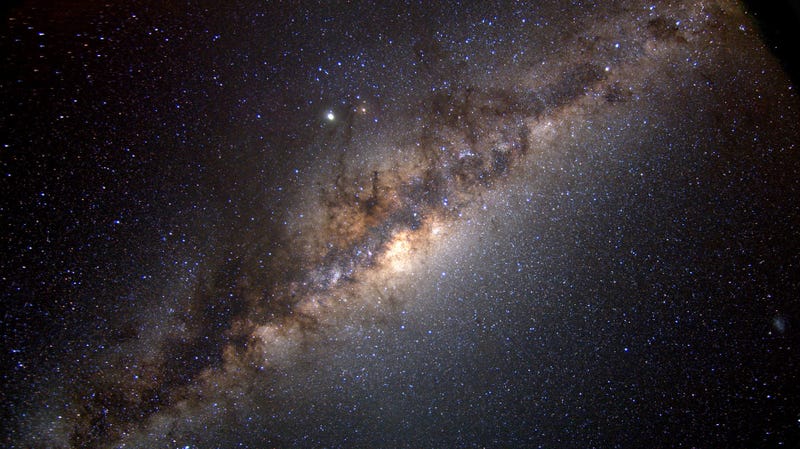If you put our galaxy on a
massive magic scale, it would weigh as much as about 1.5 trillion suns.

The Milky Weigh: That number includes dust, planets, stars, and even
the massive black hole in the center of the Milky Way. But that’s less than
half the total mass—the majority comes from dark matter. In a new trick, data
from the European Space Agency’s Gaia mission was combined with observations
from the
NASA Hubble Space Telescope to allow indirect measurements of the dark
matter’s mass.
Some background: Researchers have tried to estimate the weight of
the Milky Way before, but figures ranged widely, from 500 billion to 3 trillion
times the weight of our sun.

“We just can’t detect dark matter directly,” explains European Southern Observatory researcher Laura Watkins, lead author of the study, to be published in an upcoming edition of the Astrophysical Journal. “That’s what leads to the present uncertainty in the Milky Way’s mass. You can’t measure accurately what you can’t see.”
How they did it: The team observed the velocities of globular
clusters, which are clusters of stars that orbit the center of the galaxy. The
faster the clusters move, the more massive the galaxy. Previous investigations
used the speed of clusters relative to Earth to figure out the mass. But by
using two sets of data, this study was able to include additional sideways
motion in the velocity measurements, which yielded more accurate calculations.
Why it matters: Getting a better handle on the mass of our galaxy
allows better comparisons with other galaxies in the universe—and helps
more easily answer cosmological questions that require knowing the scale
of the Milky Way. By better understanding the universe close by, we can better
comprehend the galaxies a few more light-years away.
Comments
Post a Comment